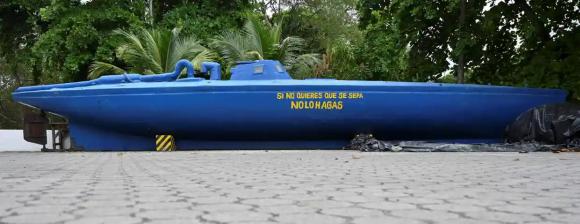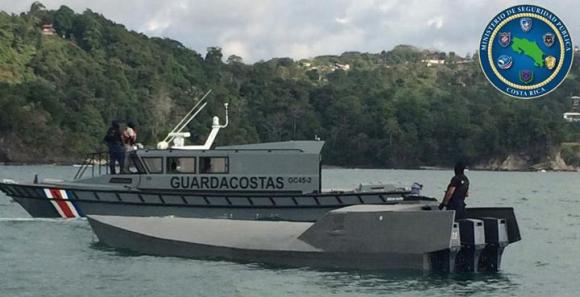
Narco-sub seized by Colombian Coast Guard — Photo: Guardian
In the 1990s, rumors began to spread that the Colombian cartels were moving cocaine to the United States by submarine. In 2006 the navy intercepted a “narco-sub” off Costa Rica with 3.5 tonnes of cocaine on board. In 2019, thirty-three submarines were intercepted by Colombian authorities, an average of almost three a month, most of them along the Pacific coast.
The Guardian quotes Admiral Hernando Enrique Mattos Dager, in charge of Colombia’s Poseidon taskforce against drug trafficking, saying, “Large quantities of cocaine are transported by sea,” he said. “It is much easier to move a tonne of cocaine by sea than by plane because there are more checks on freight at airports.” He estimates that 80% percent of the country’s illicit drugs leave via the Pacific coast and 14% go via the Caribbean.
Last November, the first narco-sub caught making a transAtlantic voyage was intercepted off Spain. More recently, a joint US Navy and Coast Guard operation caught three narco-subs in four days in mid-May, in the Pacific.
The designs of these narco subs have changed significantly over time. Most can not actually submerge but operate very low in the water with little of their hull showing above the surface. A few are capable of operating fully submerged with a snorkel providing air for the engine. As a group, they are often referred to as Low-Profile Vessels or LPVs.
The earliest narco subs looked generally like submarines, were difficult to spot, but moved fairly slowly. Over time new types were developed. Now, in addition to submarine-like hull forms, two new LPV shapes have emerged.
On May 13, Coast Guard cutter James (WMSL-754) interdicted a high-speed LPV with three outboard motors, in Eastern Pacific carrying 3,100 lb of cocaine. The LPV looked more like a fast skiff than a “submarine.”

Fast LPV caught by Costa Rican Coast Guard , January 2020
Another type of LPV is referred to as a Very Slender Vessel (VSV). As the name suggests the VSV is a long surface vessel with a narrow beam. In the same joint Navy-Coast Guard operation, the guided-missile destroyer USS Pinckney (DDG 91) intercepted a VSV on May 14. The Pinkney caught a second VSV of a slightly different design only two days later.

USCG intercepting VSV

At some point Chuck Hill’s Coast Guard blog linked to ,a href=”http://www.hisutton.com/Narco%20Subs%20101.html”>Covert Shores which seems to have one of the best compilations of narco-sub information.
In the early nineteenth century “guinea boats” were used to smuggle gold from England to France. These were effectively high-speed rowing boats that could cross the Channel in an amazingly short time and were almost impossible to spot or catch by any single sailing craft. Though relatively expensive to produce, the boats were often abandoned after one trip purely for convenience. This is surely the twenty-first century’s equivalent.
Many Thanks, like tugboat Hellen Parker these are still surface ships..
You just have to look twice!
Triple outboards must give off quite a heat signature. I expect they will be converting Tesla car systems soon.